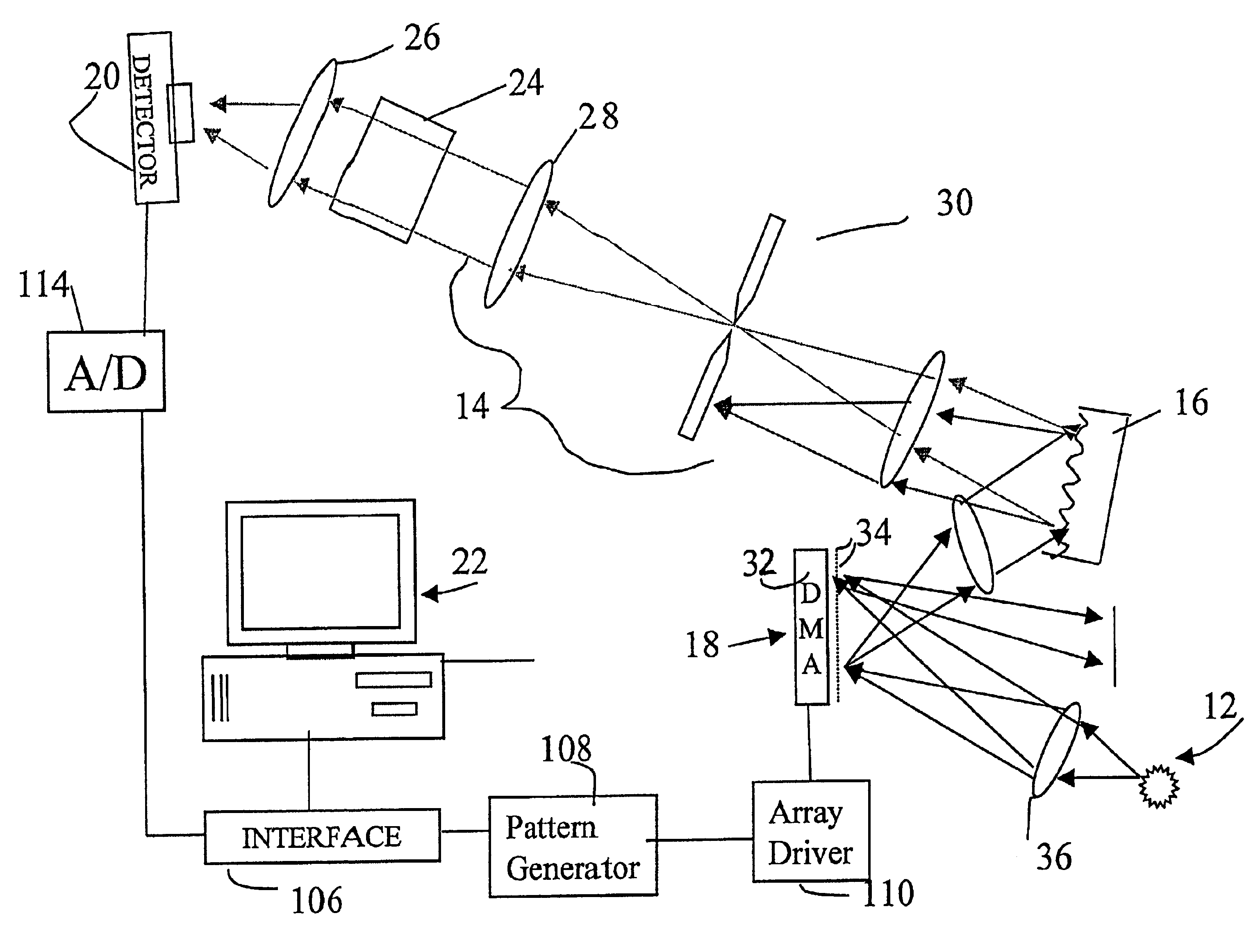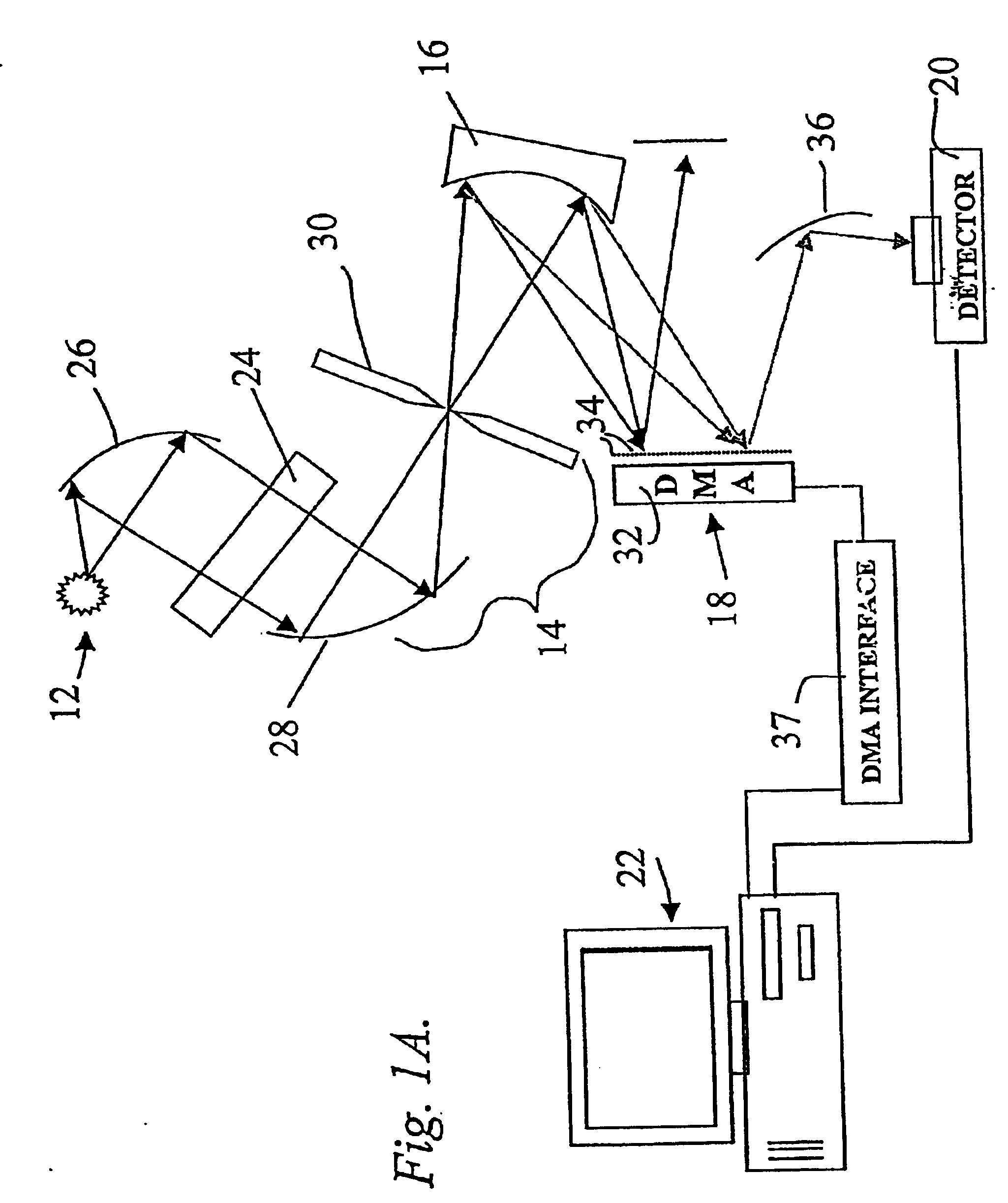System and method for encoded spatio-spectral information processing
a spatio-spectral information and encoded technology, applied in the field of signal processing, can solve the problems of limiting the utility of imagers, prior art imagers using single element detectors the plurality of detectors at the image plane can exhibit serious signal-to-noise ratio problems, so as to reduce the time to change the band, reduce the time to operate, and reduce the effect of ambient nois
- Summary
- Abstract
- Description
- Claims
- Application Information
AI Technical Summary
Benefits of technology
Problems solved by technology
Method used
Image
Examples
Embodiment Construction
In one aspect, the present invention concerns the analysis of radiation passing through or reflected from a sample of a material of interest. Since signal processing in this aspect of the invention is performed after the sample has been irradiated, in the disclosure in Section I below it is referred to as post-sample processing. Section II deals with the aspect of the invention in which radiation has already been processed prior to its interaction with the sample (e.g. based on a priori knowledge), and is accordingly referred to as pre-sample processing. Various processing techniques applicable in both pre-sample and post-sample processing are considered in Section III. Finally, Section IV illustrates the use of the proposed techniques and approaches in the description of various practical applications.
I. Post-sample Processing
A. The Basic System
Turning now to the drawing figures and particularly FIG. 1A and 1B, a spectrometer assembly 10 constructed in accordance with one embodimen...
PUM
| Property | Measurement | Unit |
|---|---|---|
| wavelengths | aaaaa | aaaaa |
| modulation frequency | aaaaa | aaaaa |
| modulation frequency | aaaaa | aaaaa |
Abstract
Description
Claims
Application Information
 Login to View More
Login to View More - R&D
- Intellectual Property
- Life Sciences
- Materials
- Tech Scout
- Unparalleled Data Quality
- Higher Quality Content
- 60% Fewer Hallucinations
Browse by: Latest US Patents, China's latest patents, Technical Efficacy Thesaurus, Application Domain, Technology Topic, Popular Technical Reports.
© 2025 PatSnap. All rights reserved.Legal|Privacy policy|Modern Slavery Act Transparency Statement|Sitemap|About US| Contact US: help@patsnap.com



